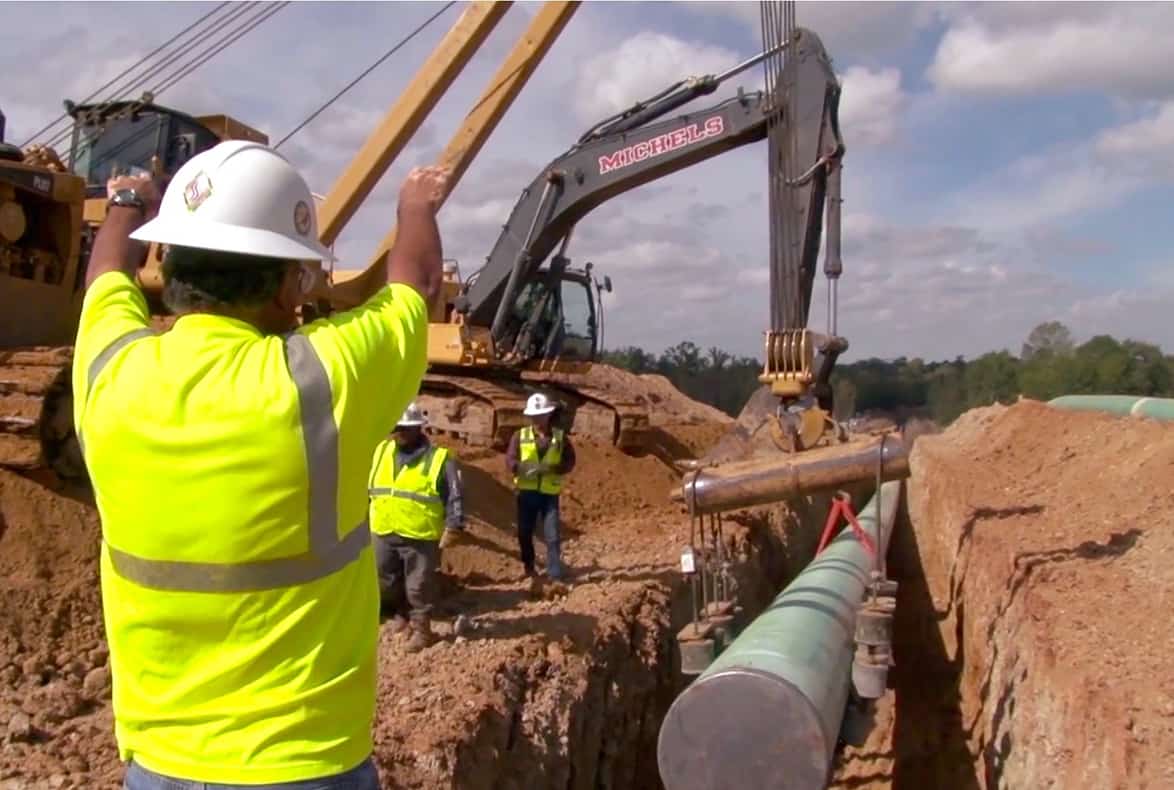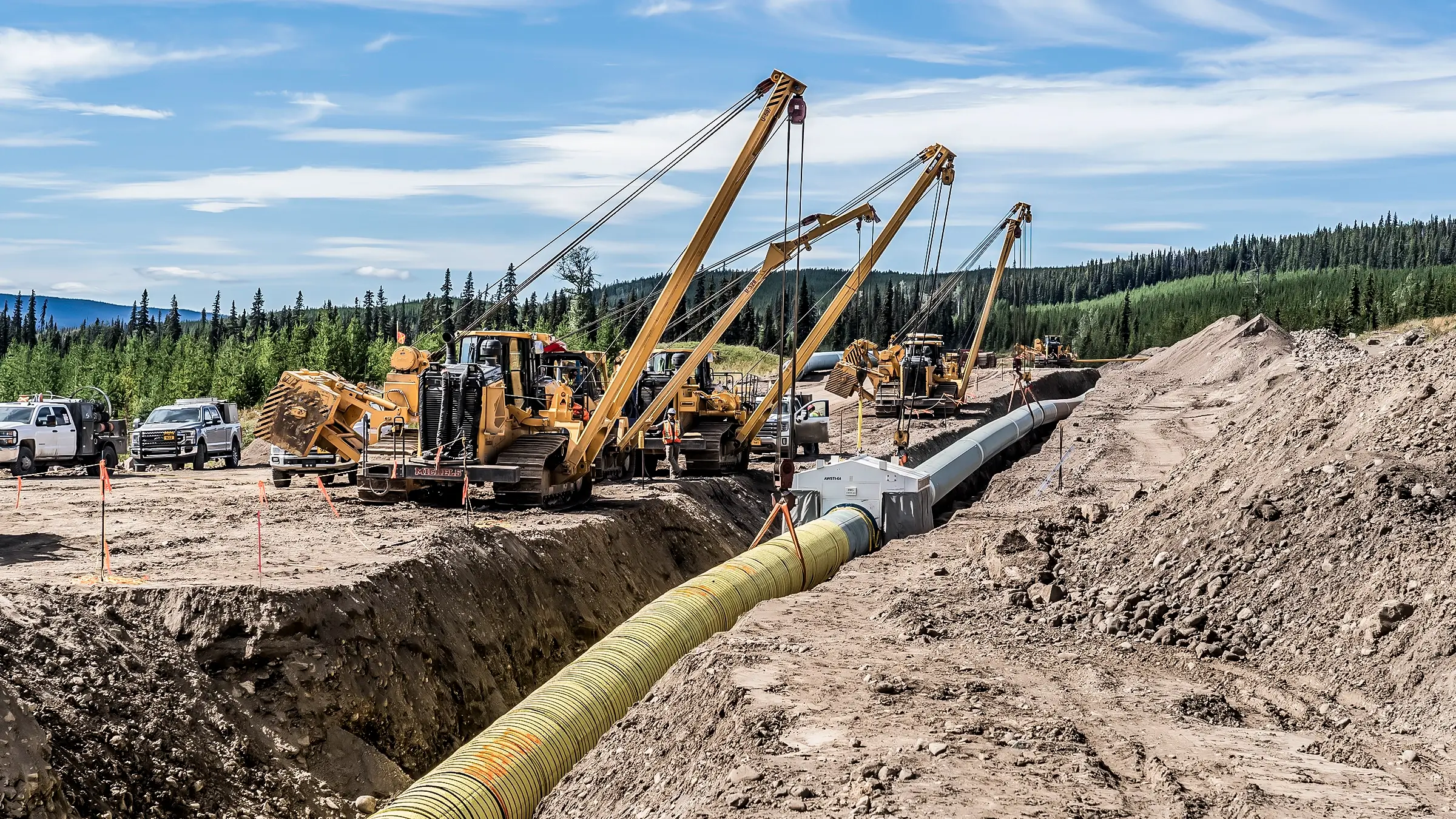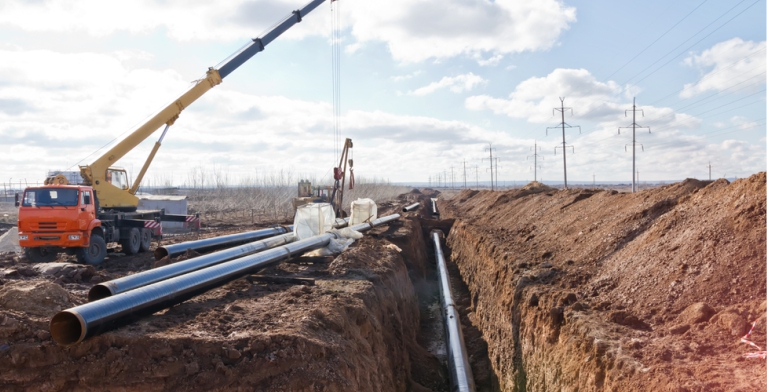Why You Should Consider Underground Work With Creek Pipe trenching services
Wiki Article
Comprehending the Fundamentals of Pipes Installation: What You Need to Learn About the Process
Proper pipe installation is crucial for any type of plumbing system. It calls for mindful factor to consider of different factors, including product option and adherence to regional policies. A well-planned layout can stop issues like pressure loss, while the right devices guarantee reliable joining strategies. Nevertheless, also experienced installers can make common blunders. Comprehending these basics can result in a much more effective and sturdy system, prompting a better look at the vital elements involved in the procedure.Picking the Right Products for Pipe Installation
When thinking about pipe installation, the selection of suitable materials is necessary to ensuring sturdiness and performance. Numerous products are readily available, each offering distinct advantages and considerations. PVC pipelines are lightweight, resistant to deterioration, and affordable, making them excellent for property pipes. On the other hand, copper pipelines, recognized for their durability and capacity to endure heats, are usually liked for heating systems.Additionally, galvanized steel pipelines give toughness and resilience, ideal for heavy-duty applications, although they are prone to rust over time.For underground installments, polyethylene pipes are favored because of their versatility and resistance to tension fracturing. Correct material selection depends on the details needs of the project, including stress scores, temperature variants, and the chemical nature of the liquids being carried - Creek Pipe Company. Eventually, educated selections concerning pipe products add considerably to the general success and durability of plumbing systemsRecognizing Local Structure Codes and Rules
Just how can comprehending local structure codes and policies influence pipe installation? Knowledge with these codes is crucial for making certain that pipe installations are safe, compliant, and effective. Neighborhood structure codes detail details requirements regarding materials, installation methods, and safety and security actions, which must be complied with in order to avoid prospective legal problems and pricey fines.Failure to conform can result in examinations being stopped working, hold-ups in job conclusion, or even mandated removal of incorrectly set up pipelines. Additionally, comprehending zoning legislations and laws can affect the sort of products permitted, along with the methods utilized for installation.Contractors and home owners alike should spend time in examining regional policies prior to starting any type of installation job. This positive technique not only advertises security yet also boosts the general high quality and longevity of the plumbing system, eventually promoting long-lasting capability and fulfillment.Preparation Your Pipe Layout and Layout
Correct preparation of pipe design and layout is vital for accomplishing a reliable pipes system. This procedure starts with examining the particular needs of the area, considering the area of components and home appliances. Accurate measurements guarantee that pipelines are appropriately routed, decreasing bends and transforms that can cause press loss.Consideration of the flow prices and the kinds of products utilized is essential, as different products have varying toughness and compatibility with pipes systems. Additionally, the developer should represent future growths or adjustments to the format, enabling for versatility in case of renovations.Efficient drain and ventilation are also substantial parts of the layout, as they protect against blockages and assure appropriate waste elimination. Collaboration with regional building codes ensures conformity and security, which is extremely important in any plumbing installation job.Vital Devices and Tools for Installation
Effective pipe installation hinges on having the right devices and tools available. Essential tools consist of pipe cutters for tidy cuts, wrenches for tightening up installations, and pliers for grasping and turning pipes. Furthermore, a level assurances pipelines are installed evenly, while a determining tape aids in achieving exact lengths.For particular materials, a blowpipe might be necessary for copper pipelines, while a PVC cutter is essential for plastic alternatives. Security tools, such as handwear covers and goggles, secures installers from possible hazards throughout the process.A pipeline bender can be especially helpful for developing smooth curves without endangering integrity, while a torque wrench assurances that links are protected to the producer's specifications.Having these tools conveniently available not only helps with a smoother installation procedure but likewise adds to the total longevity and performance of the plumbing system. Appropriate tools is critical in attaining durable results.Techniques for Correct Pipe Joining and Securing
Accomplishing a protected and leak-free connection between pipelines requires cautious interest to joining and securing techniques. Numerous techniques exist, each fit to different pipe materials and applications (Creek Pipe reviews). Welding is commonly used for steel pipelines, ensuring durable connections through heat combination. On the other hand, plastic pipes gain from solvent concrete or fusion welding, creating strong, long-term bonds.Threaded links are usual in both steel and plastic piping, calling for precise alignment and using ideal sealants, such as Teflon tape or pipe dope, to avoid leakages. Compression installations provide another alternative, where mechanical stress protects the pipelines together, making them quickly took apart for maintenance.Regardless of the method picked, appropriate prep work is essential. This includes cleaning pipe finishes and guaranteeing they are devoid of debris. Executing these strategies faithfully will enhance the longevity and integrity of the pipe system, eventually adding to its effective efficiencyCommon Blunders to Avoid During Installation
Throughout pipe installation, avoiding common mistakes is vital for making sure a reputable and reliable system. One constant mistake is stopping working to gauge and reduce pipelines accurately, which can bring about incorrect installations and leakages. Additionally, ignoring to examine the compatibility of materials can Creek Pipe Company result in corrosion or other damage in time. Improperly securing joints and links can additionally create weak factors in the system, triggering possible failures.Another common mistake is forgeting the value of slope and drainage; pipes must be mounted at the correct angle to promote correct circulation. Poor assistance for pipes can lead to sagging and stress, affecting the honesty of the system. Ultimately, neglecting neighborhood codes and regulations can cause pricey rework and safety and security threats. By knowing these mistakes, installers can considerably enhance the durability and performance of pipe systems.Maintenance Tips for Lasting Pipe Systems
To assure the longevity of pipe systems, regular inspections and cleaning are essential techniques. These steps assist determine potential problems prior to they escalate into significant problems. In addition, employing proper insulation techniques can better protect pipes from temperature level fluctuations and environmental elements.Normal Assessments and Cleaning Up
Normal evaluations and cleansing are important for preserving the durability and efficiency of pipe systems. Regularly taking a look at pipelines for signs of deterioration, leaks, or obstructions can aid recognize prospective issues before they rise into costly repairs. Cleaning pipes occasionally removes buildup that can limit flow and promote degeneration. It is a good idea to arrange evaluations a minimum of annually, yet a lot more regular checks may be essential in high-usage environments. Utilizing specialist solutions for detailed cleansing assurances that all particles is successfully gotten rid of. In addition, maintaining records of evaluations and upkeep activities aids in tracking the system's wellness over time - Creek Pipe reviews. By focusing on these techniques, home proprietors can boost the integrity and lifespan of their pipe systemsProper Insulation Techniques
Reliable insulation methods play a crucial duty in keeping the efficiency and durability of pipe systems. Appropriate insulation minimizes heat loss in hot water pipes and protects against freezing in cool water pipelines, substantially lowering power expenses and possible damages. Usual materials used for insulation consist of fiberglass, foam, and rubber, each offering varying degrees of thermal resistance. It is important to guarantee that insulation is applied evenly, covering all exposed areas without gaps. Furthermore, securing insulation with appropriate fasteners aids keep its placement and performance gradually. Regular assessments must be carried out to determine deterioration, guaranteeing timely replacements. By applying these techniques, pipe systems can operate effectively and have an extended solution life, eventually benefiting both the environment and the house owner.
Often Asked Questions
Exactly how Do I Identify the Appropriate Pipe Dimension for My Task?
Establishing the appropriate pipe size entails assessing the task's circulation needs, stress specifications, and the sort of liquid being carried. Consulting design standards and performing computations assurances ideal performance and performance in the installation procedure.What Are the Ecological Effects of Various Pipe Products?

Can I Install Pipes Myself or Should I Hire a Professional?
The question of whether to install pipelines separately or work with a professional often relies on the individual's skill degree and job intricacy. An expert may ensure conformity with laws and reduce potential long-lasting problems.
How Much Time Can I Anticipate My Pipe Installation to Last?
The durability of pipe installation differs considerably, typically lasting 20 to 100 years, depending upon products, installation top quality, and upkeep. Routine assessments and correct treatment can enhance durability and prevent premature failures.
What Are the Indicators of a Failing Pipe System?
Indications of a falling short pipe system include constant leaks, unusual water stress changes, stained water, mold growth, and consistent wetness. House owners should keep an eye on these signs to stay clear of costly damages and warranty prompt repair services are made.Report this wiki page